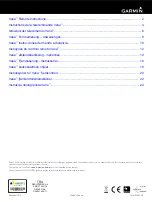
Wideband Power Sensors
8
Transmitter overdrive can be detected with peak measurements. Common
problems are overshoot at the beginning of burst packets, amplitude
modulation, and excessive transients. These damage system components with
excessive peak power and also cause data degradation, increasing the Bit Error
Rate. For TDMA applications, Peak and Burst Power measurements are used to
detect overshoot in single time slots. Other time slots must be turned off for this
test.
Burst Average Power
Figure
3
Burst Average Power
Burst width (BW) is the duration of a pulse. Period (P) is the time from the start
of one pulse to the start of the next pulse. Duty cycle
(D) is the percentage of
time that the transmitter is on. To calculate the duty cycle simply divide the
burst width by the period (D = BW / P). Low duty cycles mean that the burst
width is much less than the period; a large amount of dead time surrounds each
burst. For low duty cycles, the burst average power will be much larger than the
average power.
After peak power is measured, a threshold of ½ the peak is set. The sampled
power crosses that threshold at the beginning and end of each burst. The time
between crossings is used to calculate the duty cycle. Burst Average Power is
calculated by dividing the Average Power by the Duty Cycle.
Burst power measurements provide accurate, stable measurements in bursting
applications such as TDMA and radar. Accurately measuring the output signal
strength is essential for optimizing radar coverage patterns. Actual transmitted
power in a single time slot can be deter-mined in TDMA. The other time slots
must be off during this test.
Содержание 5012D
Страница 24: ...Wideband Power Sensors 16 Figure 9 5012D WPS...
Страница 29: ...Specifications 21 Figure 12 5016D WPS...
Страница 34: ...Wideband Power Sensors 26 Figure 15 5017D WPS...
Страница 39: ...Specifications 31 Figure 18 5018D WPS...
Страница 44: ...Wideband Power Sensors 36 Figure 21 5019D WPS...
Страница 45: ...Specifications 37...
















































